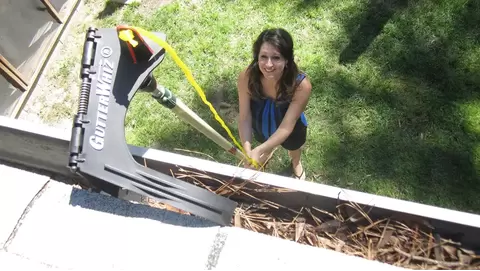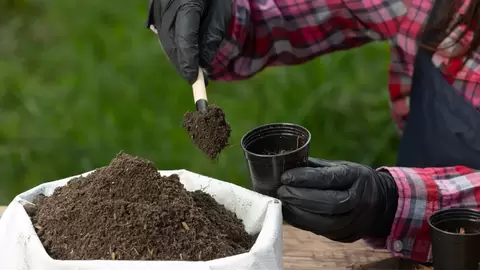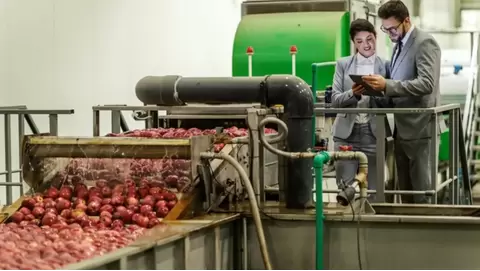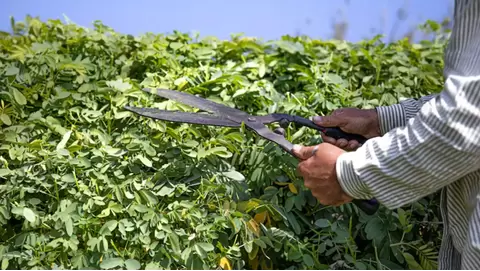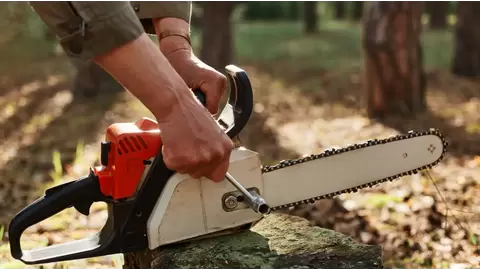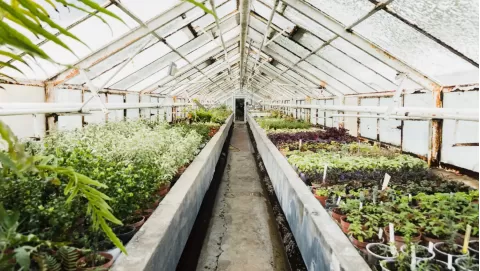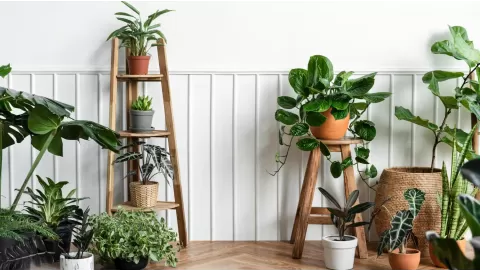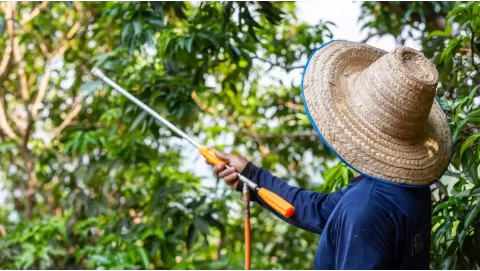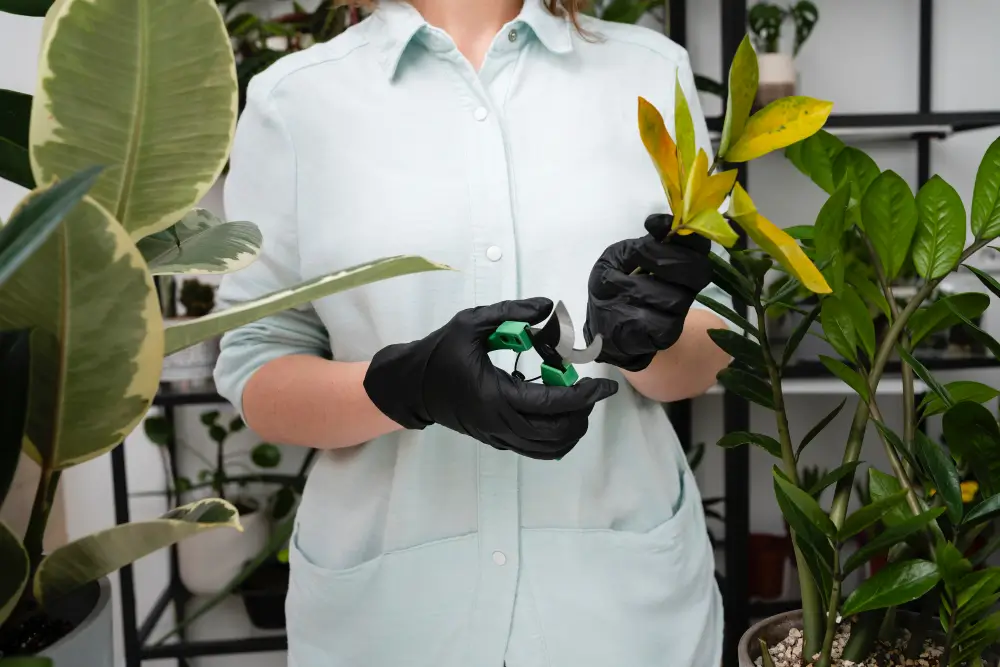
Rubber Plant Care: Growing a Healthy Ficus Elastica
Rubber plants, also called Ficus elastica, are becoming popular worldwide. These tropical plants have shiny, dark green leaves and are strong enough to thrive in many places, either indoors or outdoors. Many people find them interesting as it can purify the air.
Rubber plants are valued for their toughness, adaptability, and aesthetic appeal. Their glossy leaves can grow up to 8 feet when fully matured, making them eye-catching in any room. With its striking appearance and easy-care nature, the rubber plant can thrive in various lighting conditions, making it an ideal choice for both experienced plant lovers and beginners.
Growcycle stands out as a leading choice for plant lovers who want to thrive in gardens and indoor plants. They offer great options and suggestions for cultivation tips, especially when cultivating the best rubber plants. They also share helpful care instructions and tips, simplifying the process for everyone to maintain their rubber plants. Choosing Growcycle means adding a lovely plant to the home while supporting an environmentally friendly activity.
History of Rubber Plant
The rubber plant belongs to the Moraceae family, often called the Fig family. This family includes many types of plants. These plants are native to Southeast Asia's tropical regions and grow well in various indoor settings. Some of these plants are important for nature as well as for people. Members of the Moraceae family usually have milky sap. Rubber plants have this sap as well.
Other well-known plants in this family are the common fig (Ficus carica) and the fiddle-leaf fig (Ficus lyrata). This family grows well in warm, tropical places. It also helps keep nature diverse. Many plants from this family fit well in homes. They are popular among people who like easy-to-care-for houseplants.
Physical Appearance of Rubber Plant
Rubber plants have big, shiny leaves that look beautiful. The leaves can be deep green or burgundy, and each variety has its unique shade. The leaves are oval with sharp tips, giving a special touch to any room. When given proper care, indoor rubber plants can reach up to ten feet in height, making them a stunning piece for any home.
The rubber plant has a strong and thick stem that holds the big, beautiful leaves. The latex sap found inside the rubber plant gives it its name. In the past, this sap was used to make rubber. The sap might leak from the leaves or stem if the plant is harmed. This ooze helps protect the plant from pests.
Important Features of Rubber Plant
The following are the major features of rubber plant:
Versatility in Size and Shape
Rubber plants are unique in that they are available in a variety of shapes, sizes, and patterns. Some can grow very tall, even up to 100 feet in their natural habitat, but they also fit well in small spaces.
Pruning helps shape them, allowing them to look good indoors or outdoors. Their strong stems support their height, making them great for adding drama to any area. Cutting back smaller spaces can create a bushier look. The large, shiny leaves also vary in shape. Some are long and oval, and some are small and circular. This variety allows rubber plants to match different styles, from tidy to more natural and flowing.
Resilience to Pests
Rubber plants are tough against common pests. Mealybugs, scale insects, and spider mites find it hard to attack these plants, and insects find it difficult to penetrate the thick, waxy leaves. Rubber plants also produce a milky white sap that contains latex. This sap keeps many pests away by making the plant taste bad or even toxic to them. This helps to keep rubber plants safe and also controls pests around them.
Temperature Tolerance
Rubber plants can live well in different indoor temperatures. They like it best when it's between 60°F and 75°F. Most homes have these temperatures, so these plants fit in nicely. Their dislikes include sudden changes in temperature and chilly breezes. A steady environment helps them stay healthy and look bright.
Types of Rubber Plant
Several common varieties exist for rubber plants. Every kind has a unique appearance and requires a various level of maintenance. Every type adds a certain elegance and attraction to any space. There is a rubber plant for every type of home, no matter how big or small.
Ficus Elastica 'Robusta'
The 'Robusta' variety has large, glowing, dark green leaves that are very attractive and stand out in any space. It is perfect for those who are new to plants or looking for a plant that needs little attention. The 'Robusta' can thrive in low light but does best in indirect sunlight, which is bright.
Ficus Elastica 'Variegata'
The 'Variegata' variety has beautiful leaves. They are cream and green, making them pop in any space. This rubber plant needs more light than the 'Robusta' to keep its bright colors. Caring for it can be a little harder, so this type is better for people with some plant experience.
Ficus Elastica 'Burgundy'
The 'Burgundy' rubber plant has deep reddish-purple leaves that stand out beautifully. The deep color adds warmth to any spot they are placed. This plant thrives in bright light, similar to the 'Robusta.' The bold leaves catch the attention easily. The 'Burgundy' variety offers a special change from the common green rubber plant.
Ficus Elastica 'Tineke'
The 'Tineke' rubber plant has striking leaves in green, cream, and a hint of pink. The plant is well-known for its unusual appearance, and its lovely color combination makes it more attractive. However, the 'Tineke' grows slowly, so caring for it requires time and patience.
Botany of Rubber Plant
The rubber plant, also known as Ficus elastica, is part of the Moraceae family, which includes mulberries and figs. It is known by many popular names, such as Rubber Tree, Rubber Plant, Assam Rubber, Caoutchouc, India Rubber Fig, India Rubber Plant, India Rubber Tree, Rubber Tree, Rubber Bush, and Snake Tree.
- Size: It can grow up to 100 feet tall in its natural habitat and 6–10 feet tall indoors, with a spread of 2–3 feet. However, Dwarf varieties may only grow to about 2 feet tall.
- Stems: The stems of the rubber plant are strong and upright. They are reddish-pink in color and contain a milky white latex called rubber, which was once used to make rubber products.
- Leaves: They produce large, waxy, and broad leaves in various colors, such as dark green, maroon, or patches of yellow, pink, cream, or white. The leaves grow in a spiral pattern along the stem. They are usually oval-shaped with pointed tips and can grow 8 to 12 inches long and 4 to 15 cm wide.
- Flowers: They rarely produce flowers indoors. However, when they are produced, the flowers are small, unisexual, and greenish inside a fleshy structure known as a fig.
- Fruits: Although fruiting is rare in indoor rubber plants, it still produces a small, yellowish-green fig that is egg-shaped or oblong, less than 1 inch long, and less than 1/4 inch wide, with a fleshy covering. However, it is barely edible and contains fertile seeds only in regions where the pollinating fig wasp is present.
- Growth Habit: The rubber plant usually grows upright in a taller structure, but its spread depends on the size of its container and how it's pruned. Although it grows steadily, it may grow faster in some seasons, depending on the conditions.
Benefits of Rubber Plant
The rubber plant is not just a beautiful addition to indoor and outdoor spaces but also offers several benefits:
- Improves Air Quality: It helps to improve air quality by converting carbon dioxide into fresh oxygen during the day and absorbing common indoor pollutants like formaldehyde benzene. It also helps to remove bacteria and mold spores from the air, creating a clean environment.
- Low Maintenance: It does not need frequent watering and only needs slightly moist soil with different light conditions, making it an easy-growing plant for busy gardeners.
- Anti-Inflammatory: These plants have natural anti-inflammatory properties that can help treat skin rashes. Individuals can use 1-2 fresh leaves and apply a mixture to the affected area for relief.
- Vertical Growth: It is perfect for adding height and a bold vertical element to any space. Its upright growth adds beauty without the need for hanging planters or shelves.
- Regulates Air Humidity: It acts as a natural humidifier by maintaining the moisture level in the air and releasing water vapor through transpiration, making dry rooms feel more fresh and breathable.
- Reduces Stress: The green leaves and thick foliage of rubber plants help reduce stress and anxiety and boost the productivity of human beings.
- Drought Tolerance: It is a hard plant that doesn’t need frequent watering as it stores moisture and can be used later, making it an easy-to-care houseplant.
- Improves Sleep Quality: This rubber tree plant improves sleep quality by purifying the air and removing toxins, creating a soothing presence that is an ideal addition to bedrooms.
Types of Rubber Plant
There are several types of rubber plants, each with unique features, including variations in leaf color, pattern, and growth habits.
| Name | Leaf Color | Size (Indoor) | Growth Shape | Key Features |
|---|---|---|---|---|
| Robusta | Deep Green | 3 meters tall and 1–2 meters wide | Upright, compact, with dense foliage. | Wider leaves with air-purifying ability. |
| Tineke | Gray-green, pink, green, burgundy, marbled | 4–10 ft tall and 2–3 ft wide | Dense, tree-like shape with an upright growth | Waxy, smooth, and Pink hue leaves. |
| Yellow Gem | Shades of green and bright yellow | 7–10 feet tall and 9–12 feet wide | Vertical growth with ovate (egg-shaped) leaves | Green-centered leaves with shades of bright gold color. |
| Tricolor | Pink, cream, and green | 10 feet tall and 5 feet wide | Upright and tall | Oval leaves with multiple stems. |
| Decora | Reddish-green | 30 cm in length and 4 to 6 inches wide | Broad and glossy | Leathery leaves with a thick, green color. |
| Sophia | Green and lime with an orange shade | 6–10 ft tall and 2–3 ft wide | Rounded | Shiny variegated green and lime leaves. |
Essential Tools for Rubber Plant Care
Gardeners need some important tools during the maintenance and care of rubber plants, such as:
- Plastic wrap
- Sharp Knife
- Gardening gloves
- Pruners or Scissor
- Sphagnum moss
- Container with drainage holes
- Potting Soil
- Perlite
- Liquid fertilizer
- Orchid barks(optional)
- Neem Oil
How to Pick the Right Rubber Plant?
Choosing the right rubber plant is important for a happy home. Start by looking at the light in the room. A rubber plant like the 'Robusta' does well if the space has little light. It can grow strong in low light. The' Variegata' and 'Burgundy' are great choices for areas with more brightness. These plants need plenty of sunlight to show off their bright leaves.
Think about the desired appearance and look. The Ficus elastica 'Burgundy' has deep, warm colors that add a touch of elegance. On the other hand, the Ficus elastica 'Tineke' shows off a mix of colors that can start interesting talks in any room.
Also, consider how much care is needed. The 'Robusta' is a great choice for someone new to plants. It is easy to maintain and requires less upkeep. Choosing the right rubber plant will lead to a relaxing and healthy home addition.
Growing Process of Rubber Plant
Growing a rubber plant successfully involves several key steps, and these are mentioned below:
Step 1: Selecting the Right Location
Choose a good spot for the rubber plant at home. The area should have bright sunlight, but it must be indirect.
Step 2: Preparing the Pot and Soil
A good potting mix is important for rubber plants. Use a mix that drains well and has plenty of organic matter. Peat moss and perlite combined with potting soil is an excellent option for houseplant mixes. Ensure that a pot has drainage holes, which helps stop too much water from collecting at the bottom.
Step 3: Planting and Watering
Remove the rubber plant from its nursery pot and gently loosen the roots. Carefully extract the roots if they are firmly connected together. After that, place the plant in the fresh pot. Make sure the stem remains above the soil by packing the soil mixture into the space surrounding the roots. Also, avoid burying it too deep. This will help the plant grow well.
After planting, give the rubber plant plenty of water, ensuring that water flows out from the bottom. Rubber plants like their soil a bit dry, so be careful when watering the soil.
Step 4: Fertilizing Schedule
Feed a rubber plant every four to six weeks. This feeding is important in spring and summer when the plant is growing. A balanced fertilizer that dissolves in water is best as this provides the necessary nutrients for the plant. Good feeding leads to healthy growth.
Step 5: Pruning
Regular trimming helps rubber plants grow thick and strong. When broken or yellow leaves are removed, the plant looks better and is healthier. Trimming also allows air to circulate the leaves. This airflow is important for keeping the plant healthy.
Various Types of Containers for the Optimal Growth
The container for growing a rubber plant is important. The type of material can really affect how well the plant grows. Different materials hold water differently. Some keep the soil moist, while others allow it to dry out quickly. The container can also help control the temperature around the roots. Good root health is key for a happy plant. Selecting the appropriate pot can have a significant impact on plant growth.
The various types of containers involve Plastic, Terracotta, and Ceramic. Plastic pots retain moisture effectively and are lightweight. Many indoor plant lovers like to use them. These pots help keep the soil from drying out too fast. Terracotta pots are popular because they have tiny holes. These holes let air and water go through the walls. This is good for drainage, which helps stop water from building up. But compared to plastic pots, terracotta can dry out more quickly. This means plants may need more water, especially when it's warm outside.
Ceramic pots look nice and hold water well. They keep moisture better than terracotta pots because it is difficult for water and air to move through them. However, if not checked, this can cause the soil to stay too wet, and waterlogged soil can harm the plant.
Why are Rubber Plants Perfect for Indoor Placement?
Rubber plants can add charm to home decor. They grow tall with wide leaves that stand out in any room. These plants can fit different styles, from simple and modern to colorful and bohemian. Their distinctive look contributes to creating visually appealing environments, making them a preferred option for anybody who enjoys interior design.
Rubber plants offer a variety of benefits beyond their ease of care and appealing aesthetics. It help with humidity levels when placed indoors. As they breathe, they pass moisture into the atmosphere. This keeps the air comfortable and is especially helpful during dry times.
Many indoor plants also make people feel happier and mentally relaxed. Rubber plants play a role in this by fostering a peaceful and pleasant atmosphere for people. They can lower stress and make the atmosphere feel better. Being around plants connects people to nature, and this connection can boost focus and help with productivity.
Tips and Tricks for Thriving Rubber Plants
Following are a few tips for the successful growth of these plants:
Optimal Light Conditions
Lighting is very important for rubber plants. Bright light is best for strong, green growth, as it helps the plant make food without harming the leaves. Bright light also makes the leaves fuller and more colorful.
If the plant is next to a window, prolonged exposure to sunlight should be avoided. Too much sun can cause brown spots on the leaves or make them fall off. Rubber plants can survive in lower light, but growth will be slower as a result. And in darker places, the leaves may shrink, and the plant may stretch toward the light, leading to an uneven look. Regular checks on the plant are important. If leaves change color or shape, move to a brighter area, which can be more helpful.
Watering
Watering is very important for rubber plants. These plants prefer slightly moist soil but not wet soil. In spring and summer, the plants grow more and may need more water. In fall and winter, they rest and need less water.
Checking the soil moisture is simple. A finger can be used to feel the soil an inch deep. If it feels dry, water is needed. Ensure the pot's extra water drains out the bottom whenever the plant is watered. This allows the roots to absorb what they need and removes extra moisture. Keeping the rubber plant well-watered helps it stay healthy.
Soil Requirements
The quality of soil is very important for rubber plant health. These plants prefer well-draining soil that retains some moisture only. A good soil mix can have peat moss, perlite, and potting soil. This mix lets air move through and helps extra water escape.
The pH level also matters, which can be checked through a pH meter. The best range is 6.0 to 7.0, which is slightly acidic to neutral. Checking soil moisture often can stop overwatering. Overwatering can cause root rot. If the soil gets too packed, repotting can help. The right soil helps rubber plants grow well and brightens up any space.
Common Challenges and Solutions for Plant Care
Apart from proper care and love, rubber plants may face some challenges, and these are mentioned below:
Leaf Drop
Leaf drops can happen for many reasons. Sudden temperature changes can cause this. Not watering enough or giving too much water can also be an issue. Poor lighting can lead to leaf drop, too.
Keeping the rubber plant in a steady environment helps. The right amount of all these factors is key for the successful growth of rubber plants. If leaves start to drop, check the plant's conditions closely. Then, make any needed changes to the care routine.
Leggy Growth
A rubber plant that grows tall and leggy has most of its leaves at the top. This means it needs more light. To help it grow fuller, find a brighter spot for the plant. Bright, indirect light is best. Pruning the plant can also help. Cutting back some of the tall growth makes it bushier.
FAQs
Do rubber plants have a low light tolerance?
Rubber plants prefer indirect, bright light. But they can grow in low light, too. They will still survive, but growth might slow down. The leaves may not look as bright or colorful in these conditions.
How do I propagate my rubber plant?
Rubber plants grow well from stem cuttings. Take a healthy stem that has a few leaves. Remove the leaves from the bottom part. Put the stem in water or soil. Keep the new cutting in a warm spot with lots of light. Wait until roots start to grow. This way, a new rubber plant can begin to thrive.
How can I encourage my rubber plant to grow bushier?
To help a rubber plant grow bushy, prune it regularly by cutting back some tall stems. This helps the plant branch out and look fuller. Giving the plant enough light will also help it grow outwards. A well-lit plant tends to be more lively and vibrant.
The Bottom Line
Rubber plants are an excellent choice for anyone looking to enhance their home with a vibrant, low-maintenance plant. With the right care, rubber plants will thrive, offering lush greenery and a touch of nature's beauty.
Understanding how plants grow is key to helping them thrive. Each plant has its growth cycle and needs care and nourishment. Many products can help with this, such as fertilizers, soil amendments, pruning tools, and pesticides. All of them, along with all the necessary instructions and advice, are available on the Growcycle platform. Over time, these products promote plant health and minimize harm to the ecosystem.
Disclaimer: This material is for informational purposes only and should not be relied on for legal, medical, financial, or any other form of professional advice.




